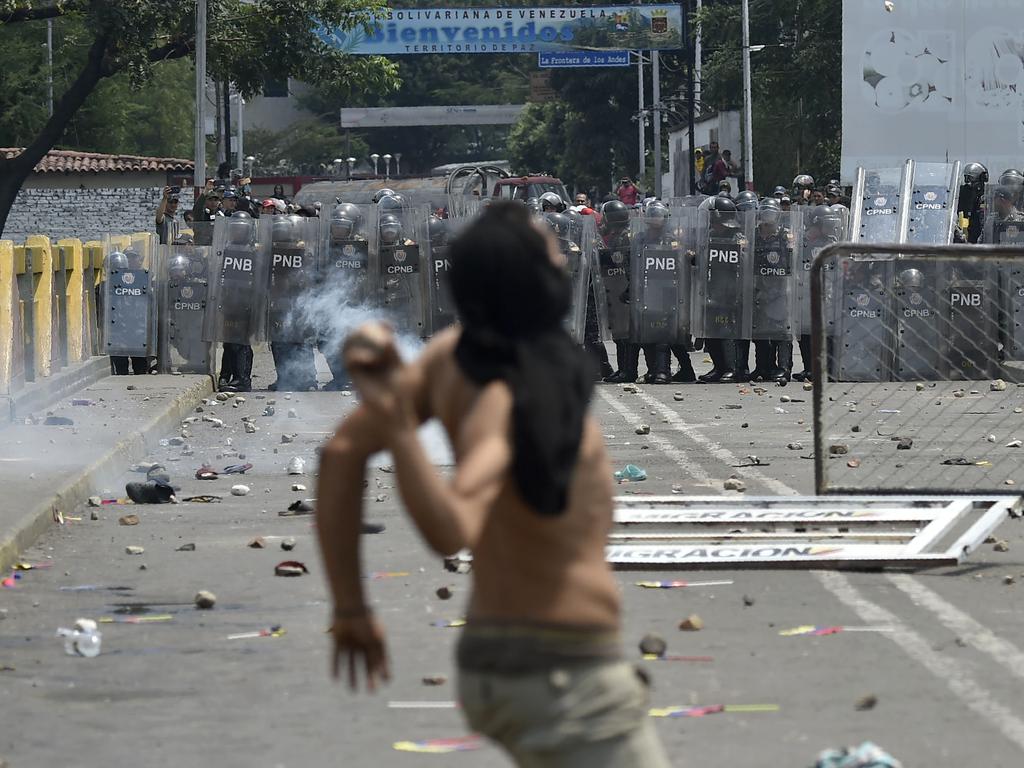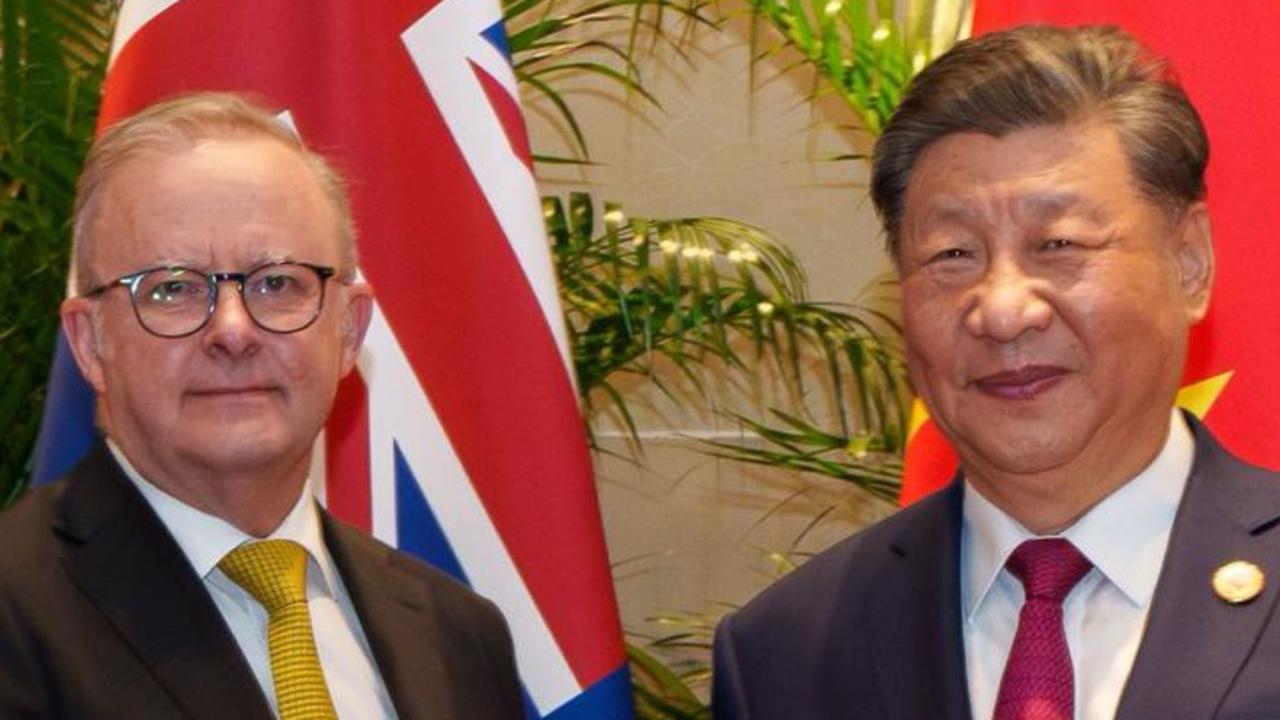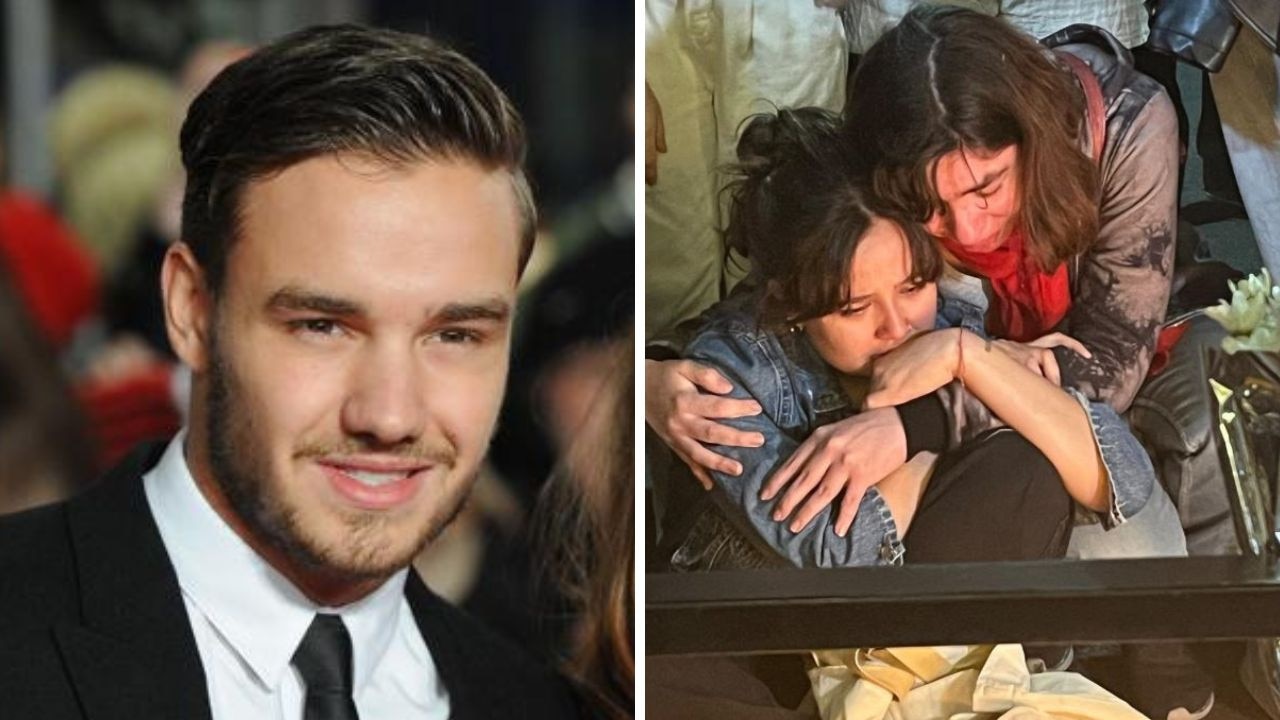Tensions flare as protesters set fire to vehicles on Venezuela border over blocked aid
A high-risk operation to get humanitarian aid into Venezuela descended into deadly chaos after security forces fired on demonstrators and aid trucks were set ablaze.
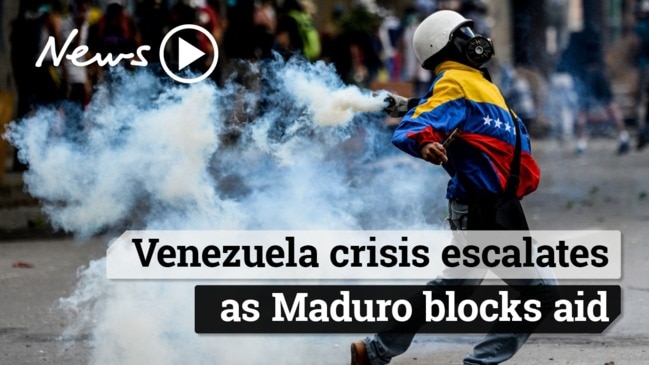
A high-risk operation to get humanitarian aid into Venezuela descended into deadly chaos Saturday after President Nicolas Maduro’s security forces fired on demonstrators and aid trucks were set ablaze.
Two people, including a 14-year-old boy, were killed in clashes with security forces that left more than 300 people wounded at various border crossings.
Despite a blockade by Maduro, opposition leader Juan Guaido had set a Saturday deadline for the delivery of food and medical aid stockpiled in Colombia and Brazil. Aid is also being held on the Caribbean island of Curacao.
Humanitarian aid, much of it from the United States, has become the centerpiece of the standoff between Maduro and Guaido, the 35-year-old leader of Venezuela’s National Assembly who declared himself interim president exactly one month ago.
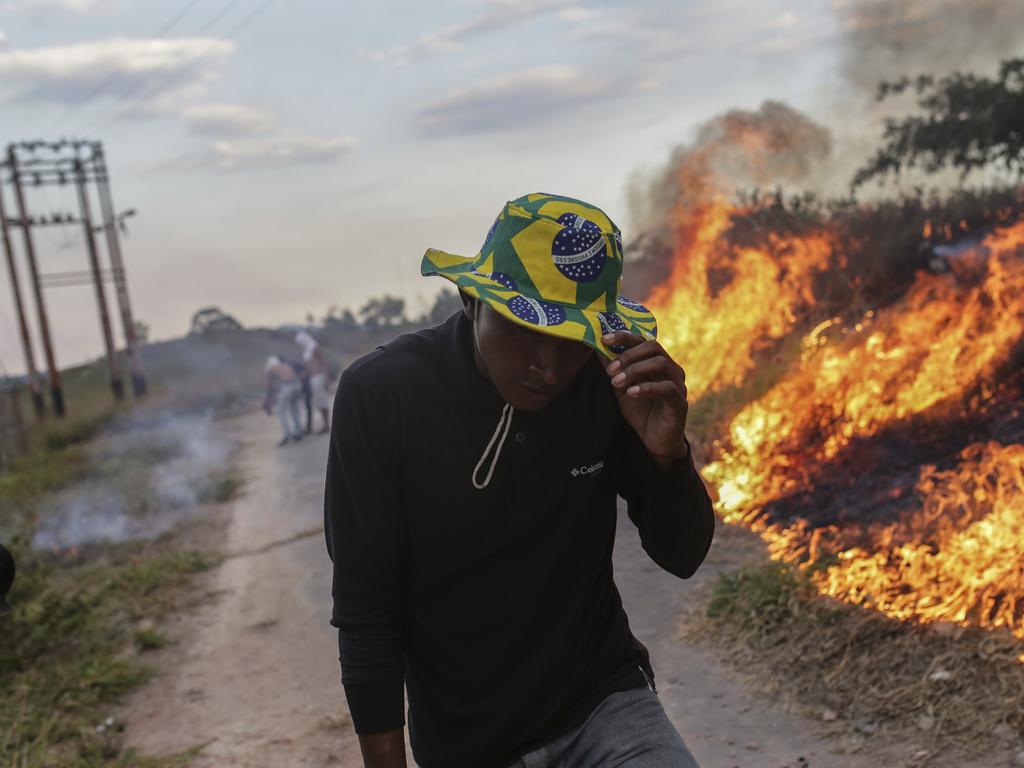
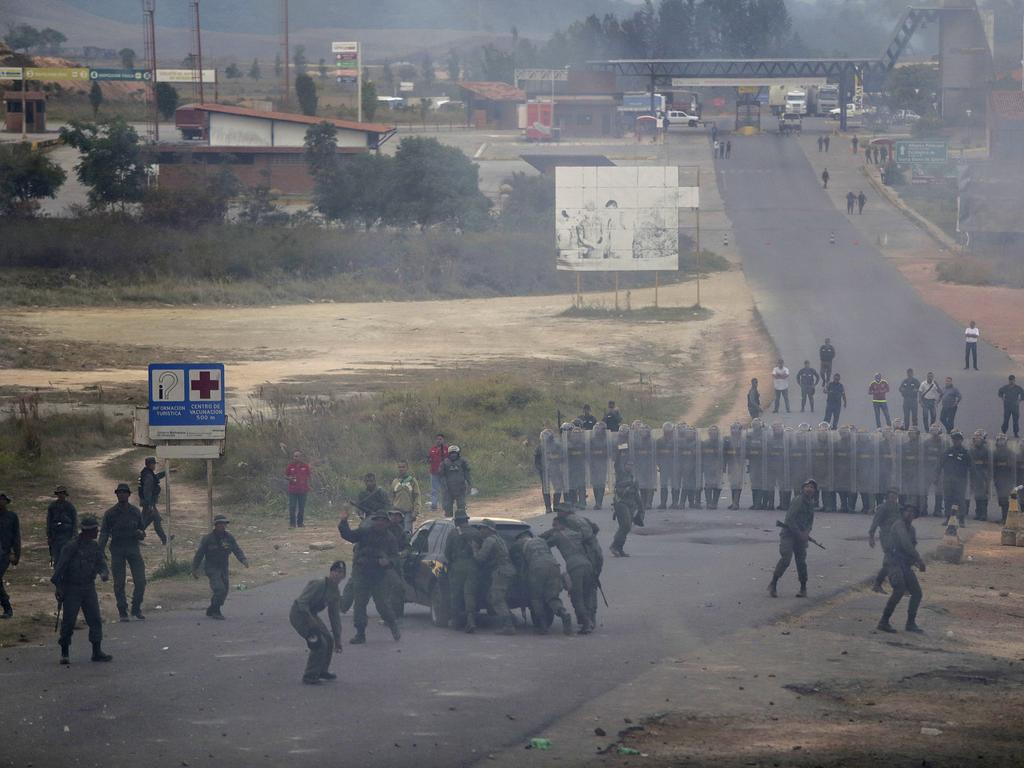
US Secretary of State Mike Pompeo said the United States “will take action” as he condemned violence perpetrated by Maduro’s “thugs.” Guaido, meanwhile, announced he would participate in Monday’s Lima Group meeting in Bogota, and called on the international community to be prepared for “all possibilities” with regard to Maduro.
The country is gripped by a humanitarian crisis that has seen poverty soar during a prolonged recession and hyperinflation.
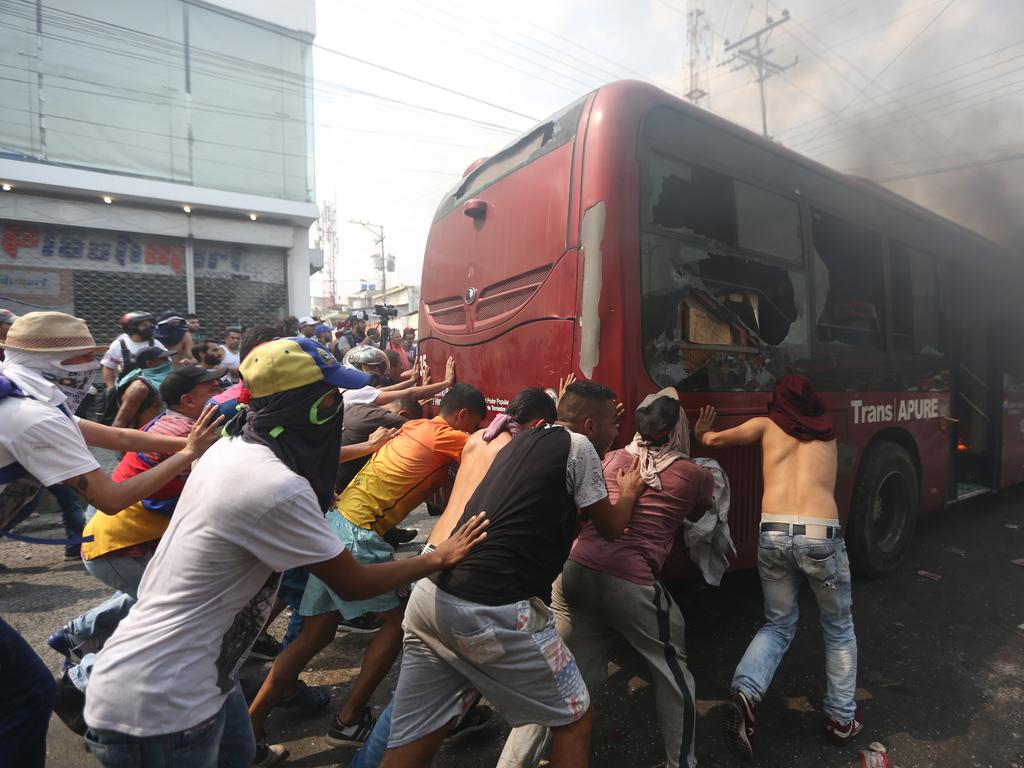
A boat carrying aid from the US territory of Puerto Rico had to turn back after receiving a “direct threat of fire” from Venezuela’s military, Governor Ricardo Rossello said, calling the move a “serious violation against a humanitarian mission” that is “unacceptable and outrageous.” Hundreds of volunteers, many clad in white, were frustrated in their attempts to collect the aid at the Colombian border, pinned back by Maduro’s security forces.
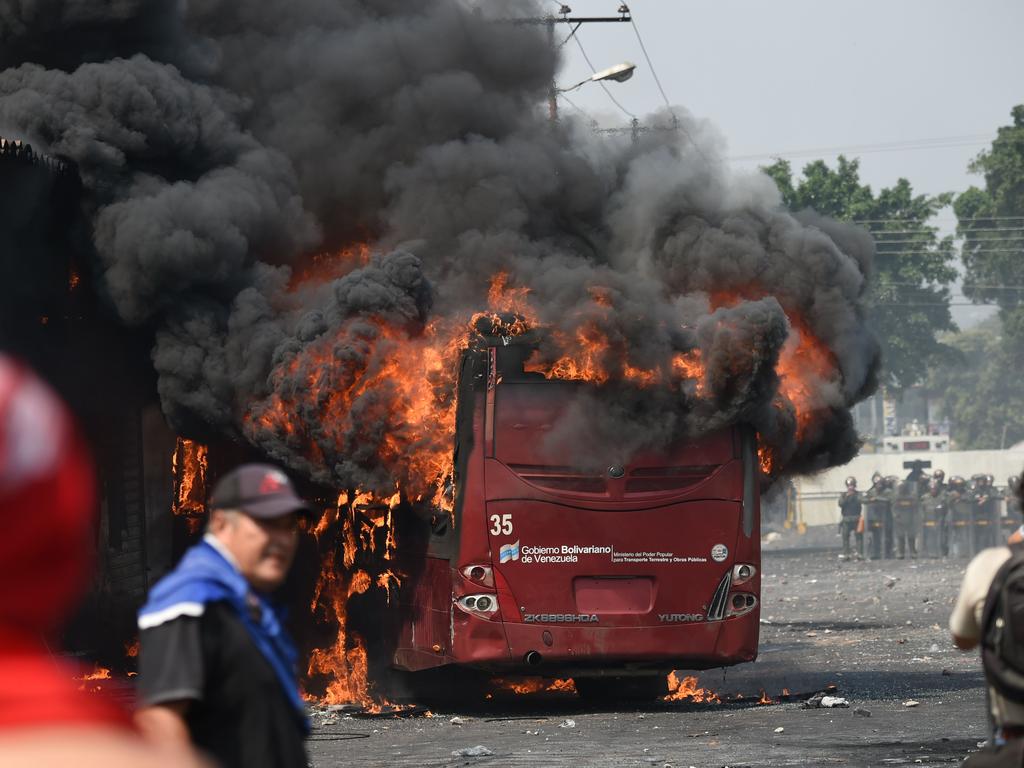
Violent clashes
Since dawn, protesters in the border towns of Urena and San Antonio were held at bay by the Venezuelan National Guard firing tear gas and rubber bullets.
Gunshots could be heard in the streets of Urena during hours of rioting. Civil defense officials in Colombia said at least 285 people had been injured in clashes at border bridge crossings. Colombia also ordered aid trucks to return from the border after the violence.
Most were Venezuelan nationals who were trying to cross with aid parcels when they were pushed back by Venezuelan forces.
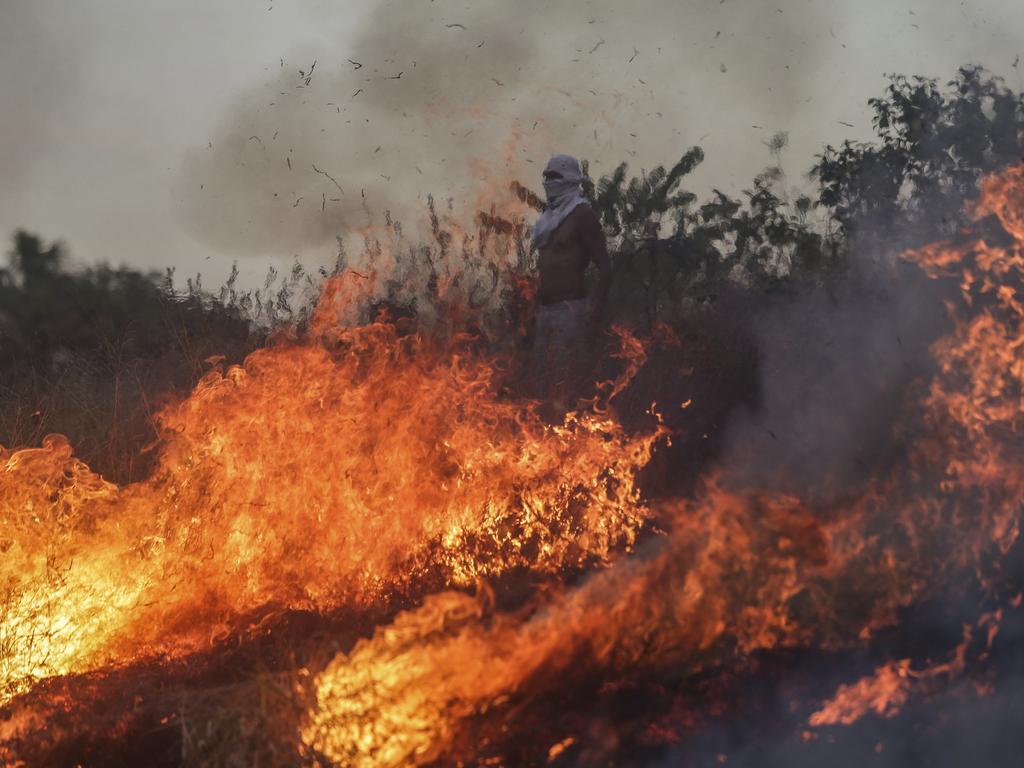
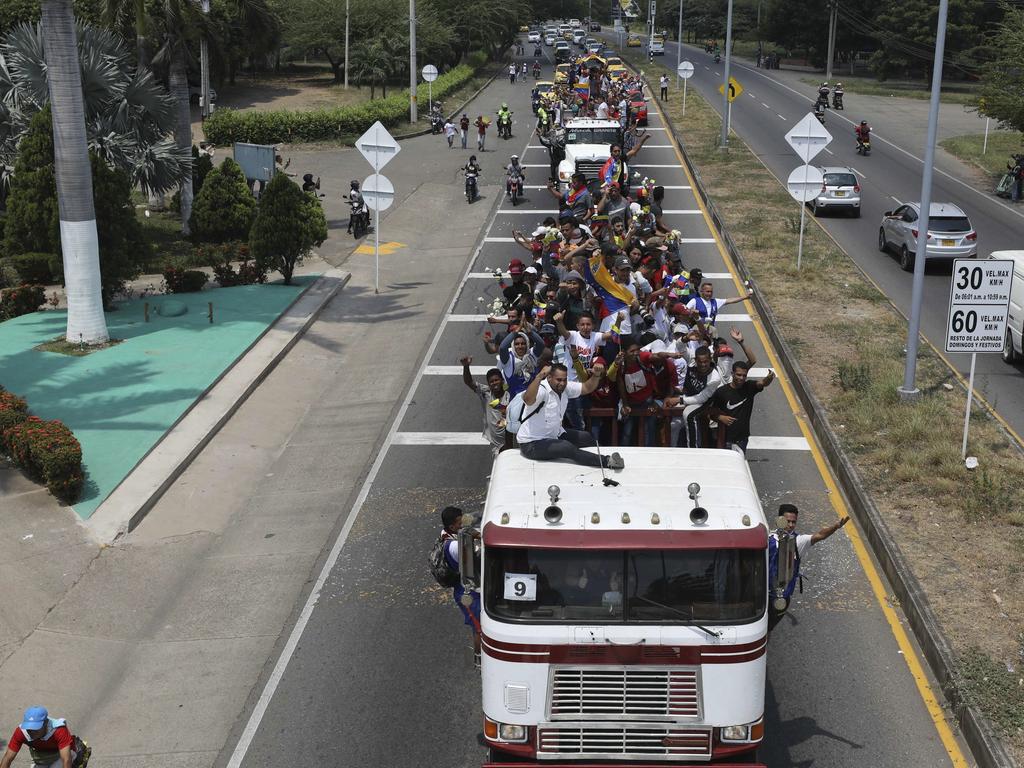
But the most serious incident came hundreds of miles (kilometers) away, at the Santa Elena de Uairen crossing point on the southern border with Brazil where the killings took place.
Another 31 people were wounded when troops blocking the entry of aid opened fire on civilians hoping to gather it, according to rights group Foro Penal.
“They are massacring the people of Venezuela in Santa Elena de Uairen and San Antonio, where from seven o’clock in the morning they did not allow Venezuelans to gather to bring in humanitarian aid,” Guaido told reporters in Cucuta, Colombia, where he was coordinating the aid operation.

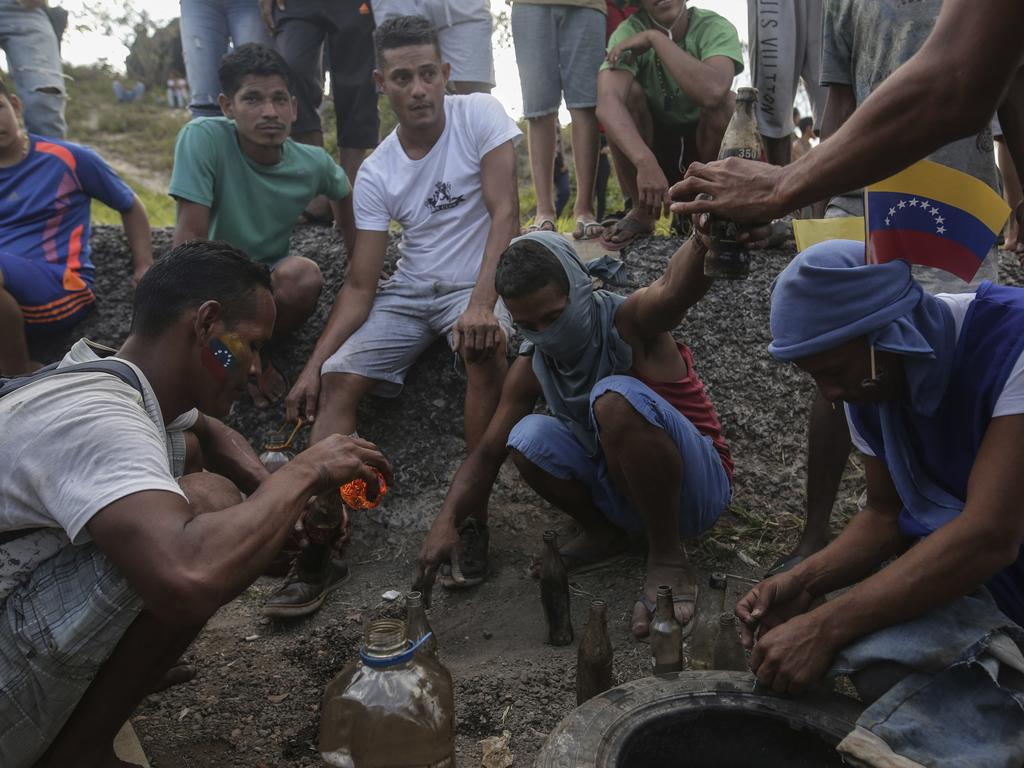
Maduro’s supporters halted and set ablaze two trucks loaded with aid driven through barricades on a border bridge, sending a pall of black smoke into the sky over the Santander crossing linking Cucuta and Urena.
“People are saving the bulk of what’s on the first truck, and looking after the humanitarian aid that Maduro the dictator ordered burned,” opposition lawmaker Gaby Arellano told reporters.
Two other trucks carrying aid sent by Brazil to Venezuela returned to the Brazilian city of Paracaima after Venezuelan troops barred them from crossing for several hours.
Some National Guard troops took advantage of the confusion to abandon their posts and cross into Colombia.
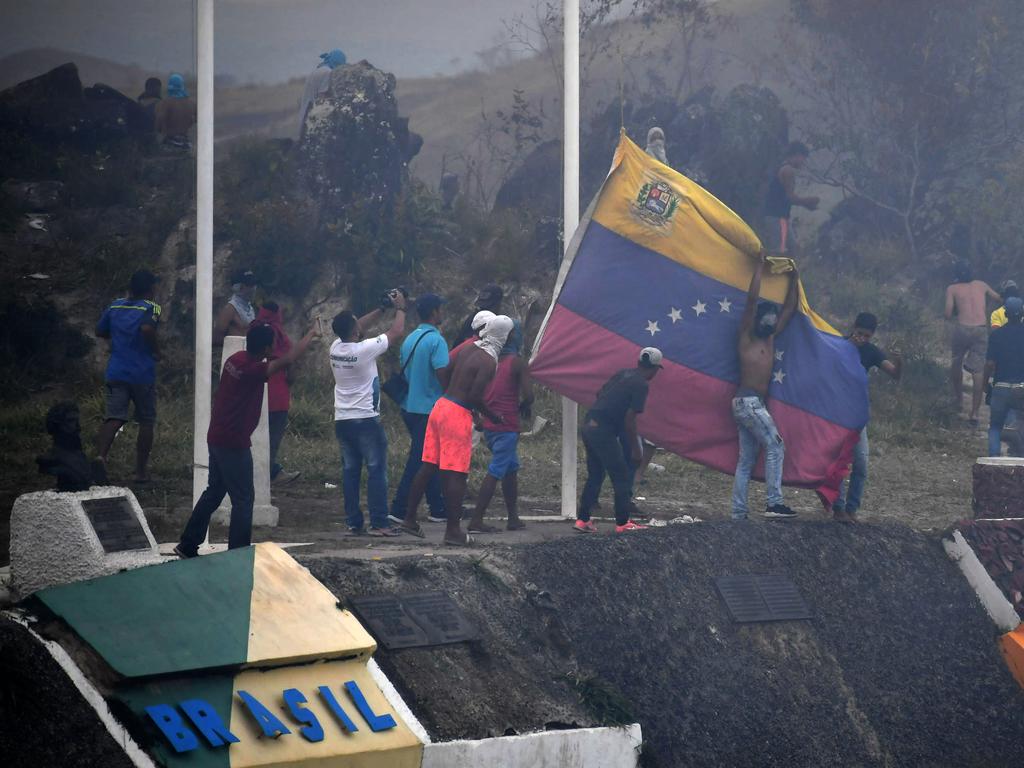
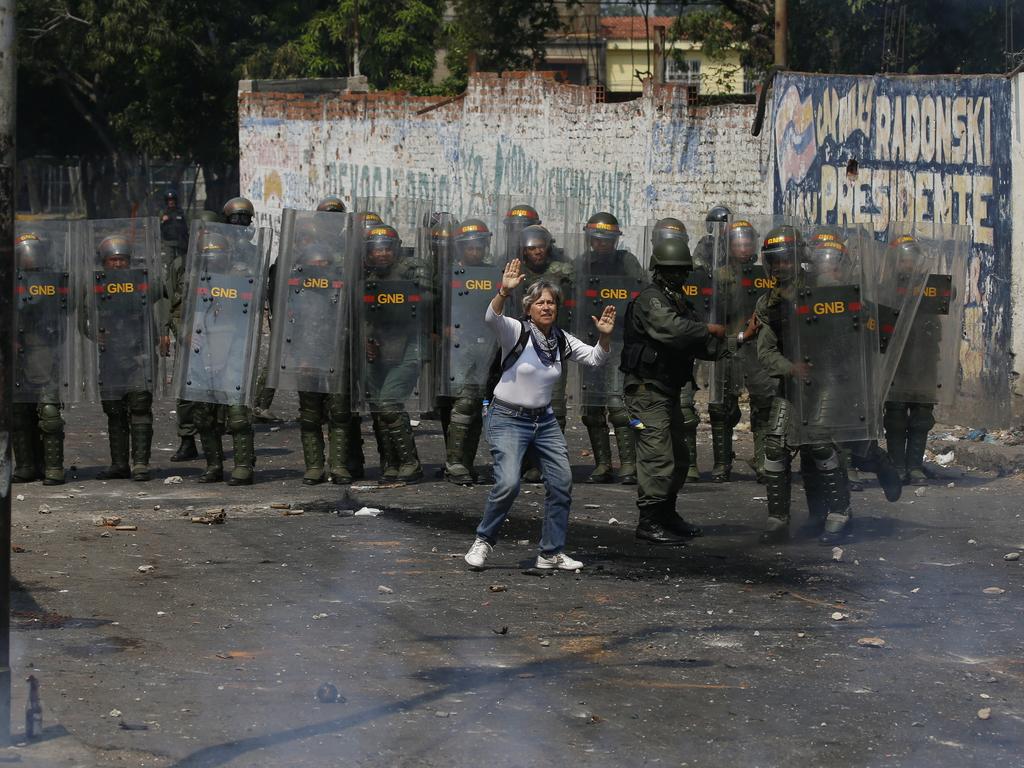
Colombia’s immigration service said at least 60 members of the armed forces had deserted the “Maduro dictatorship” by late Saturday.
Guaido -- recognized as interim leader by more than 50 countries -- said they would be welcomed and not treated as traitors.
The opposition leader formally launched a long-planned distribution operation at a warehouse at the Tienditas border bridge in Cucuta joined by the presidents of Chile, Colombia and Paraguay.
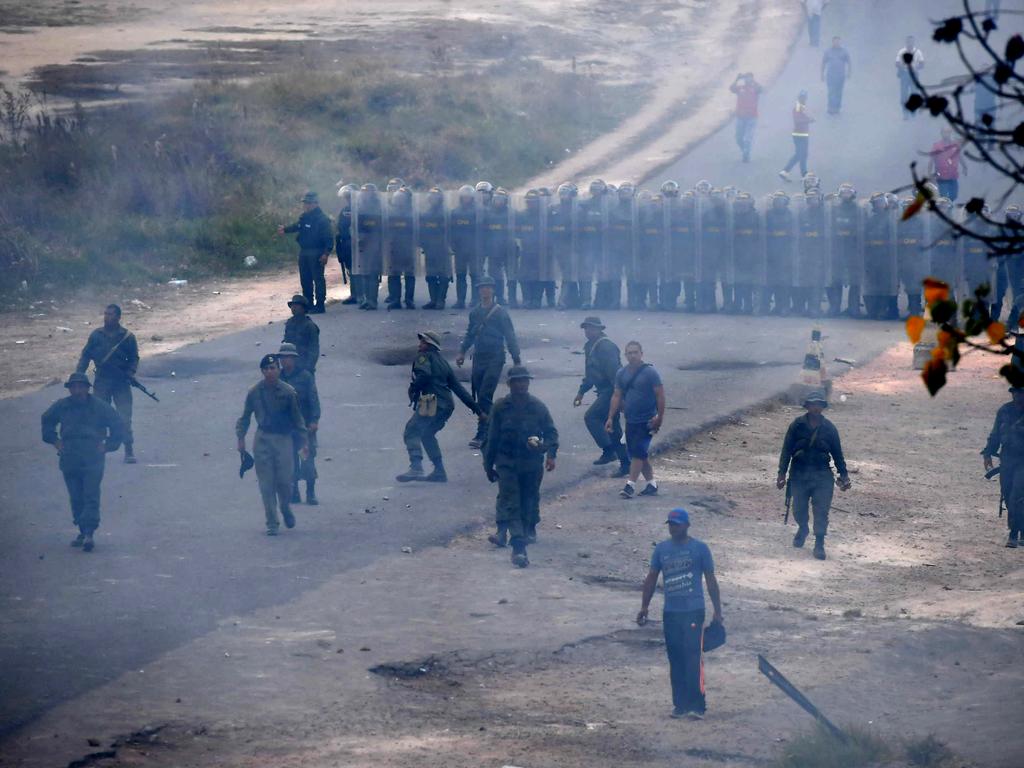
“The humanitarian aid is definitely going to Venezuela in a peaceful and calm manner to save lives at this time,” said Guaido.
Shortly afterward, he claimed a first shipment had reached Venezuela to defy Maduro’s blockade. But the truck he was referring to remained stuck at the Brazilian border hours later.
Guaido had vowed humanitarian aid would enter his country despite the blockade. His supporters planned to drive the supplies from Colombia into Venezuela at the closed border crossings supported by a flood of volunteers and accompanied by Catholic priests in an attempt to avoid arrest.
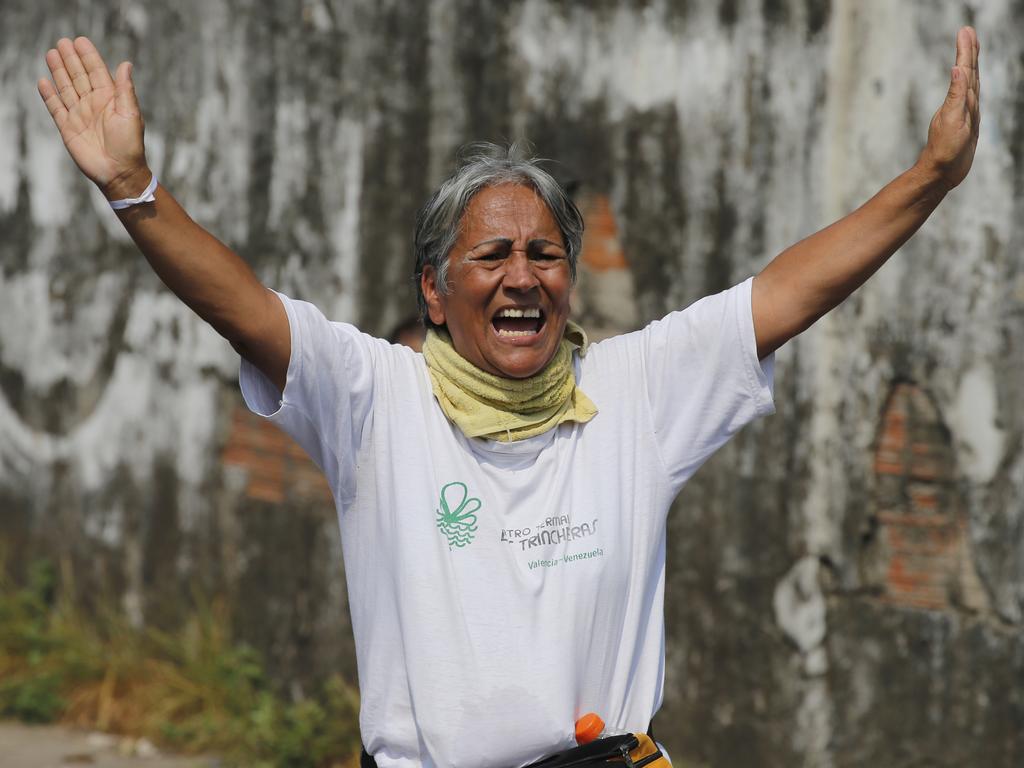
Maduro defiant
Socialist leader Maduro has rejected the aid, which he’s dismissed as a show and pretext for a US invasion.
Angered by Colombia’s support for Guaido, Maduro announced Venezuela was severing diplomatic ties with Bogota, and gave Colombian diplomats 24 hours to leave the country.
“I will never bow down, I will never give in. I will always defend our country with my own life if necessary,” Maduro told a rally of his supporters in the capital Caracas, after thousands had marched through the city under the slogan “Hands off Venezuela.” As many as 300,000 Venezuelans are in dire need of food and medicine after years of shortages and malnutrition, according to Guaido, who has accused Maduro of rigging his re-election and is demanding a new vote.
United Nations figures show that about 2.7 million people have fled Venezuela since 2015 during the crisis, and around 5,000 Venezuelans emigrate from their country each day.
